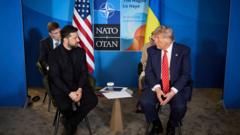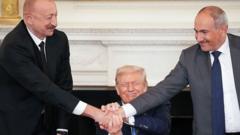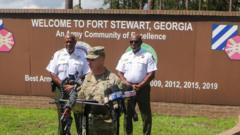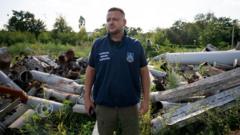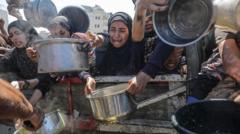An American airstrike on Fordo, Iran's hidden nuclear enrichment facility, appears to have precisely targeted ventilation shafts, suggesting U.S. intelligence on structural vulnerabilities. Satellite images revealed significant changes, leading analysts to speculate on the effectiveness of the attacks.
U.S. Airstrike Targeted Iran's Fordo Nuclear Facility's Vulnerable Points

U.S. Airstrike Targeted Iran's Fordo Nuclear Facility's Vulnerable Points
Recent satellite analysis reveals U.S. drone strikes aimed at critical ventilation shafts in Fordo, Iran's nuclear site.
Satellite imagery taken after airstrikes on Fordo, Iran's underground nuclear enrichment facility, suggests the U.S. military clearly identified and targeted ventilation shafts, crucial weak points, during their operation. Analysis of the imagery revealed that these locations, highly visible in early phases of the facility's construction, were buried by 2011 but were likely critical to the site's functionality.
Experts weighed in on the strategy behind targeting these shafts. Mark Fitzpatrick, a nuclear expert at the International Institute for Strategic Studies, suggested that striking a ventilation shaft would disrupt the structural integrity necessary for the facility’s operation. Scott Roecker, from the Nuclear Threat Initiative, reinforced this, calling them "probably the most vulnerable points" of the complex.
Details of the military action reveal that six B-2 bombers reportedly dropped a total of twelve 30,000-pound "bunker buster" bombs overnight, as stated by a U.S. official. However, damage assessments vary; while President Trump claimed that Iran's nuclear enrichment capabilities were "completely and totally obliterated," military evaluations indicated substantial damage rather than total destruction. Ongoing damage assessments by both the U.S. and Israeli forces are still being conducted.
Joseph Rodgers of the Center for Strategic and International Studies indicated that targeting these specific points likely suggests U.S. intelligence had high confidence in the structural defects in those shafts. Post-strike satellite images uncovered scattered debris across the complex, yet support buildings remained intact, signifying that the primary goal was to disable the underground operations rather than just the visible infrastructure above ground.
Further analysis of satellite imagery pertained to Iranian activity leading up to the strikes. Observations recorded on June 19 showed an unusual concentration of activity with approximately 16 cargo trucks near an entrance tunnel, indicating potential strategic preparation by Iran. Follow-up images taken just before the airstrikes revealed new dirt filled in entrance tunnels, implying defensive measures were taken prior to the attack.
The implications of these strikes extend beyond mere physical damage, highlighting the broader context of nuclear proliferation concerns in the region and the ongoing surveillance efforts made possible through satellite technology. The fallout from this incident will likely shape future diplomatic and military engagements involving Iran and nuclear capabilities moving forward.
Experts weighed in on the strategy behind targeting these shafts. Mark Fitzpatrick, a nuclear expert at the International Institute for Strategic Studies, suggested that striking a ventilation shaft would disrupt the structural integrity necessary for the facility’s operation. Scott Roecker, from the Nuclear Threat Initiative, reinforced this, calling them "probably the most vulnerable points" of the complex.
Details of the military action reveal that six B-2 bombers reportedly dropped a total of twelve 30,000-pound "bunker buster" bombs overnight, as stated by a U.S. official. However, damage assessments vary; while President Trump claimed that Iran's nuclear enrichment capabilities were "completely and totally obliterated," military evaluations indicated substantial damage rather than total destruction. Ongoing damage assessments by both the U.S. and Israeli forces are still being conducted.
Joseph Rodgers of the Center for Strategic and International Studies indicated that targeting these specific points likely suggests U.S. intelligence had high confidence in the structural defects in those shafts. Post-strike satellite images uncovered scattered debris across the complex, yet support buildings remained intact, signifying that the primary goal was to disable the underground operations rather than just the visible infrastructure above ground.
Further analysis of satellite imagery pertained to Iranian activity leading up to the strikes. Observations recorded on June 19 showed an unusual concentration of activity with approximately 16 cargo trucks near an entrance tunnel, indicating potential strategic preparation by Iran. Follow-up images taken just before the airstrikes revealed new dirt filled in entrance tunnels, implying defensive measures were taken prior to the attack.
The implications of these strikes extend beyond mere physical damage, highlighting the broader context of nuclear proliferation concerns in the region and the ongoing surveillance efforts made possible through satellite technology. The fallout from this incident will likely shape future diplomatic and military engagements involving Iran and nuclear capabilities moving forward.






